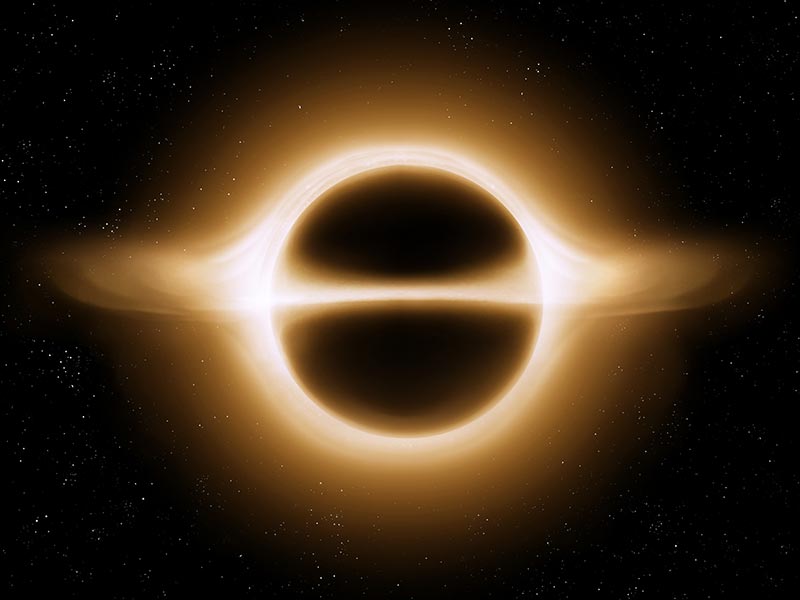The idea that we and everything in our universe might be a hologram is tied to a puzzling question in physics called the Black Hole Information Paradox.
When something falls into a black hole, the information describing it—like its shape, state, and properties—seems to vanish once it crosses the event horizon (the outer boundary of a black hole). But, according to quantum mechanics, information can’t just disappear. This creates a paradox when black holes eventually evaporate and the information seems lost forever.
Enter the holographic principle, which suggests that instead of being lost inside the black hole, the information is stored on its surface, or “event horizon.“
According to black hole thermodynamics, the amount of information a black hole can contain is proportional to the surface area of its event horizon—as mass or energy falls into a black hole, the surface area of the event horizon increases.
This was surprising to physicists because it suggests that all the information about what’s inside the black hole is somehow encoded on its surface. In other words, the 3D information inside the black hole might be “stored” or “projected” onto the 2D surface of the event horizon, much like how a hologram contains 3D images on a 2D surface.
So, if this is true for black holes, which have the highest information density possible, the same could easily apply to the entire universe. The holographic principle suggests that all the information in our 3D universe could actually be encoded on a distant 2D surface. This idea proposes that our 3D world might be a projection from a 2D boundary—just like a hologram projects 3D images from a 2D surface.
Related Articles
The History of Paper Clips—A Simple but Brilliant Design
Paper clips are one of the most recognizable office supplies, yet their design has remained largely unchanged since the 19th century. But who invented them? While several designs existed, the most...
The Science of Sound Waves—How We Hear the World
Sound is all around us, but have you ever wondered how it actually travels? Unlike light, which can move through empty space, sound needs a medium—air, water, or solid objects—to be heard. When an...
The History of Traffic Lights—Keeping the World Moving
Traffic lights are a crucial part of modern transportation, but their origins go back further than you might expect. The very first traffic light was installed in 1868 in London, outside the British...





